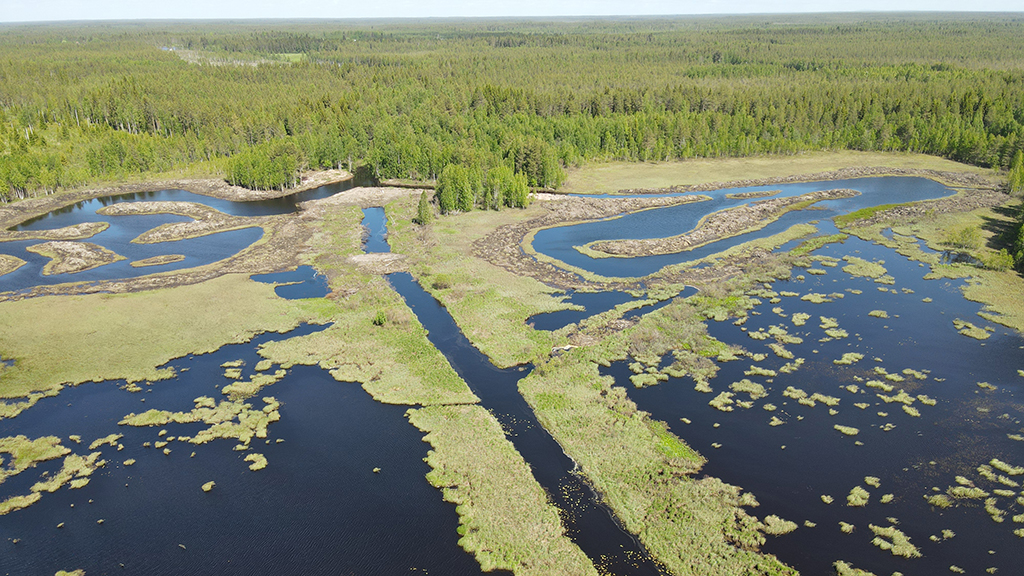Restoring Peatlands on Private Land Requires Incentives and Local Engagement
Peatland restoration in Finland has gained urgency due to the European Union’s Nature Restoration Regulation, with a growing emphasis on the role of privately owned land. Restoration aims to benefit biodiversity, surface water quality, and the climate. However, government-led actions alone are insufficient. In early 2025, the Geological Survey of Finland GTK and the RELEX Foundation conducted interviews with restoration actors. Participants identified key barriers and proposed measures to accelerate peatland restoration—highlighting the need for stronger incentives, clear operational models, and local cooperation.

To meet the EU regulation’s requirements, Finland must significantly increase the scale of peatland restoration—both in terms of speed and land area—on state and private lands alike. The goal is to halt biodiversity loss, prevent the degradation of water systems, and mitigate climate change.
Large-scale restoration efforts at the landscape or catchment area level would enhance the effectiveness and impact of the restoration actions. However, this demands more diverse strategies for organizing and supporting restoration efforts than those used thus far.
GTK’s new policy brief outlines key measures to expand peatland restoration in Finland.
New models needed for peatland restoration on private land
Until recently, peatland restoration in Finland has primarily focused on state-owned conservation areas, particularly on forest-drained peatlands. However, restoration efforts on private land are now gaining momentum.
Collaborating with local communities is essential for success. Effective restoration requires regional knowledge, social acceptance, and cooperation. Local communities are ready to engage if they perceive the initiatives as fair and beneficial.
Currently, public support schemes offer insufficient incentives for private landowners to pursue restoration. To involve more private land, restoration must be made a competitive land use option. Incentives could be strengthened by combining state subsidies with private funding.
Even when willing to restore, landowners often lack the capacity to initiate projects independently due to fragmented land ownership and the complex coordination these efforts require. Intermediary actors are needed to bring landowners together, develop restoration plans, and secure funding.
A clear commitment to peatland restoration
Stakeholders in restoration and conservation share a vision of what effective peatland protection and restoration requires. Large-scale efforts on private land will only succeed if the state commits to supportive and effective policy instruments.
Existing obstacles—such as gaps in incentive systems, restrictive legal frameworks, and the lack of local ownership—can be overcome if all relevant actors work toward a common goal. Local communities, landowners, businesses, and funders above all need a clear message: peatland restoration is the land use of the future, and the state is committed to supporting it over the long term.
Further information
Liisa Maanavilja, Senior Researcher
Geological Survey of Finland GTK
liisa.maanavilja@gtk.fi
tel. +358 29 503 5045
Maija Lampela, Senior Scientist
Geological Survey of Finland GTK
maija.lampela@gtk.fi
tel. +358 29 503 0151
GTK’s policy brief outlines eight key actions to accelerate peatland restoration in Finland. The policy brief is available in Finnish.
Read the policy brief and download

This project has received funding from the European Union’s Horizon 2020 research and innovation programme under grant agreement No 101036484 (WaterLANDS). This output reflects the views of the authors and the European Commission is not responsible for any use that may be made of the information contained therein.

WaterLANDS is funded through the EU Horizon 2020 Green Deal Call 7.1, WaterLANDS will contribute to the restoration of wetland sites across Europe which have been damaged by human activity and is laying the foundations for protection across larger areas. The Geological Survey of Finland GTK has participated in drafting the policy brief with funding from the WaterLANDS project.
Visit the project website
